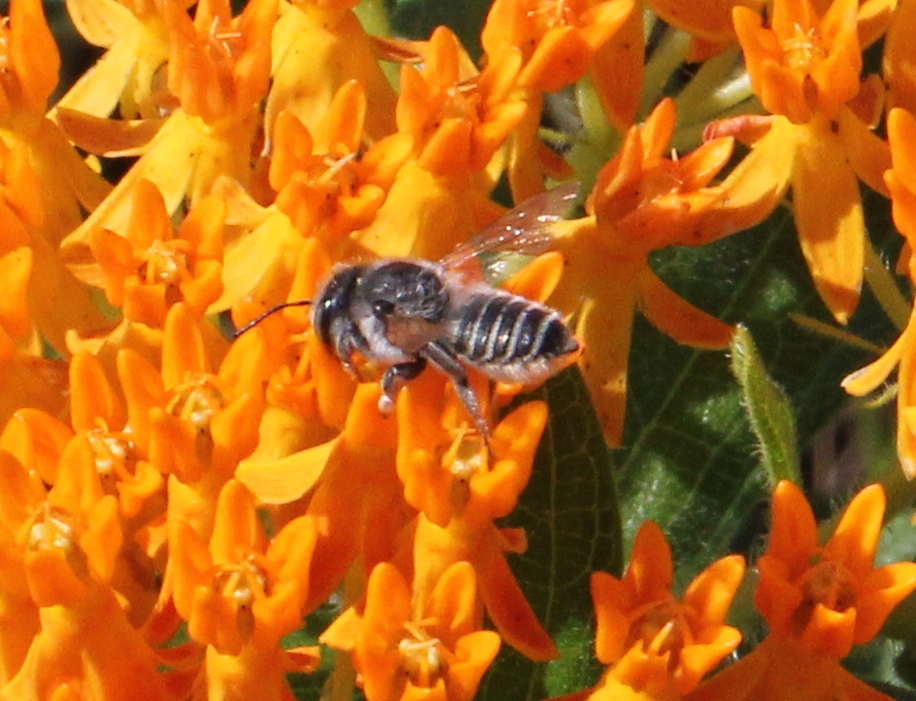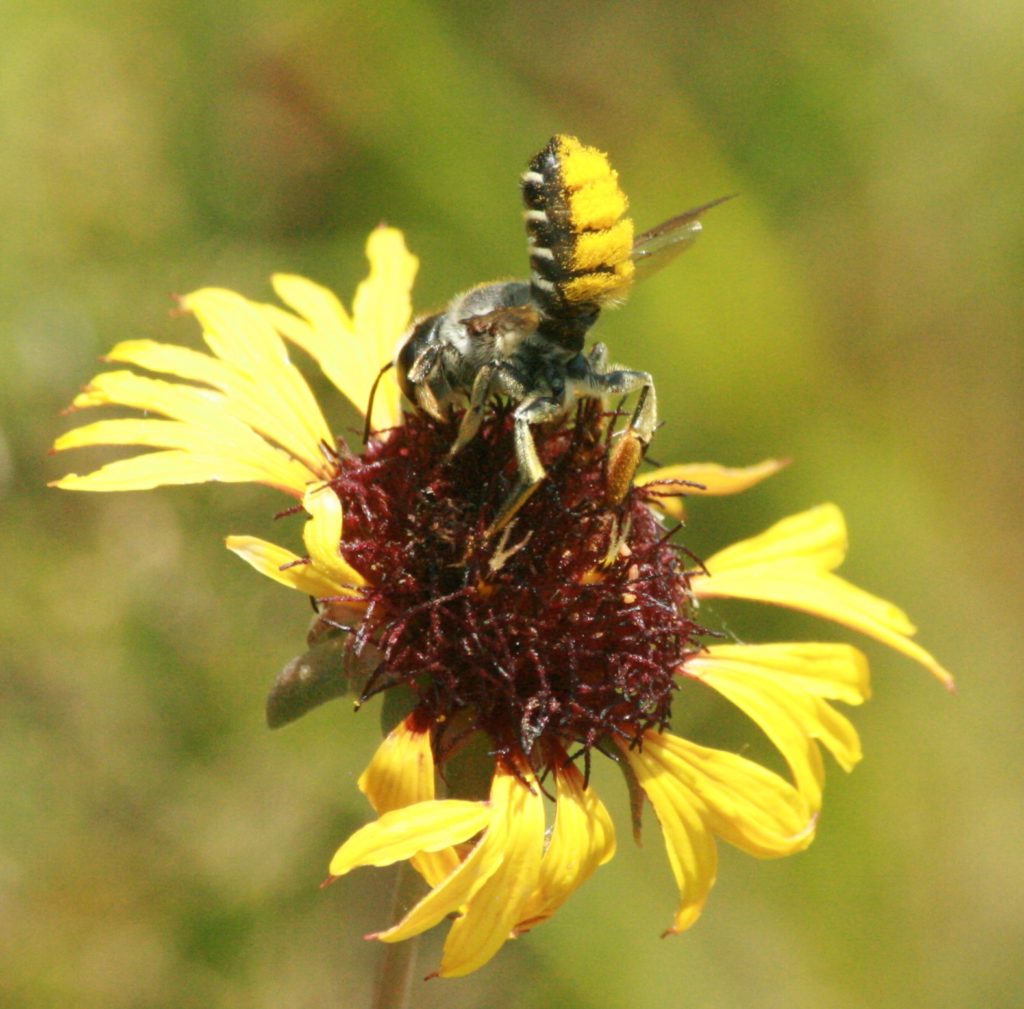I spent a few hours roaming our little refuge today, and I was delighted to find some native Butterflyweed, Asclepias tuberosa, blooming in a new place! I don’t think I planted these particular plants. I expect they planted themselves from seeds of plants I already knew about on the refuge. Milkweed seeds fly on the wind, so it’s not odd to find them popping up in new places. They chose a particularly good high visibility spot, so that’s a plus!

We have an astonishing 7 species of milkweeds growing there naturally, some rather thin and small, but this is not a species that gets overlooked easily. It’s more of a showstopper, with the bright orange flowers peeking out from the grasses.

As I approached the first plant, hoping to take a few quick pictures, so did a female Leafcutter Bee (Megachile sp.) and another tiny bee.

Most people know by now that Milkweeds are great for Monarchs, but fewer people know that a gazillion other species love the nectar of these flowers. “Beeweed” just doesn’t have the same ring to it as “Butterflyweed” does. Nothing that I know of collects Milkweed pollen on purpose because of the special packaging it comes in, but that’s a story for another time.
I’m still not sure what the tiny bee was—maybe a Lasioglossum, owing to its tiny size. The larger Leafcutter (about the size of a Honeybee) soon busied herself sipping nectar among the flowers while the diminutive metallic bee disappeared into them entirely.

The tops of these Milkweed flowers are not more than 1/4 inch across, so the whole tiny bee was smaller than that.

The Leafcutter would be collecting pollen under her abdomen if she were out doing that, and holding it high in the air at a weird angle to protect her precious load of provisions, but some parts of the day are dedicated to nectar collection and others to pollen collection, and she wouldn’t collect pollen from this plant in any case. This was strictly nectar foraging.

Here’s a similar bee with a load of pollen.

I didn’t have long to spend with the bees, since there were Blackberries to pick, so I snapped a few and went on my way. As I returned to the barn, I saw signs that the Leafcutter and her relatives had been busy. Some flowers and leaves along the way had neat circles or ovals snipped from them.

Meadow Pinks, Sabatia campestris, are some of the favorite flowers of Leafcutters at the refuge—for building materials. If I spot one with only two or three petals snipped, I can usually wait there, and the Leafcutter mama will return to snip another petal within minutes. Since the cutting process takes only a few seconds at most, I seldom get a decent picture of that. This one already had all five petals snipped.

The Leafcutter uses the cut circles in an overlapping way to make a tube in which her eggs are laid. She’ll build that tube in a sheltered place. Sometimes I find them under Bluebird nests, and sometimes inside a spacious seedpod.

Leafcutters will use just about any space, including hollow bones and stems and spiral seashells. They frequently use the bamboo tubes we provide them at home.
Sometimes, five minutes with my bee friends can keep me smiling for the rest of the day.